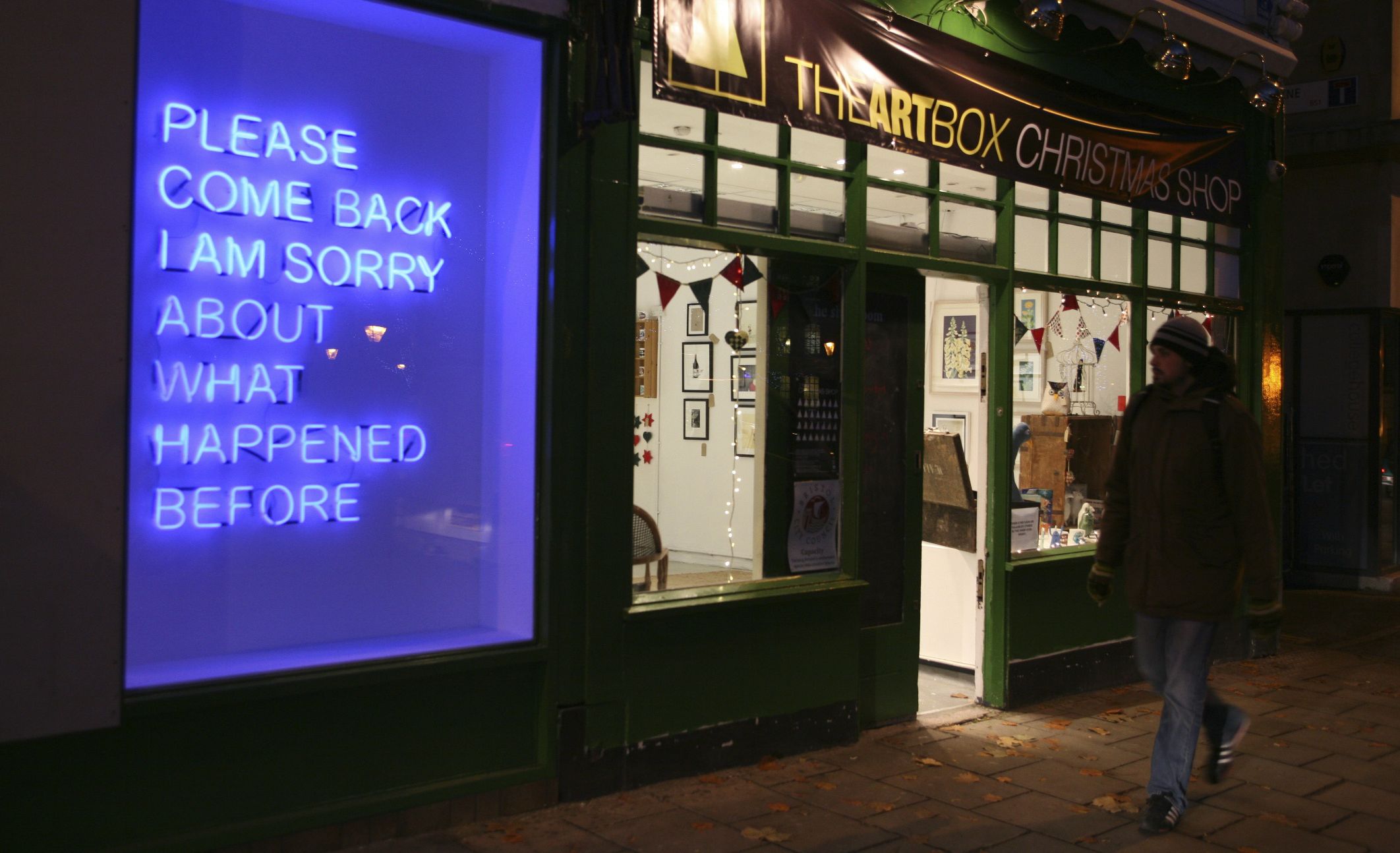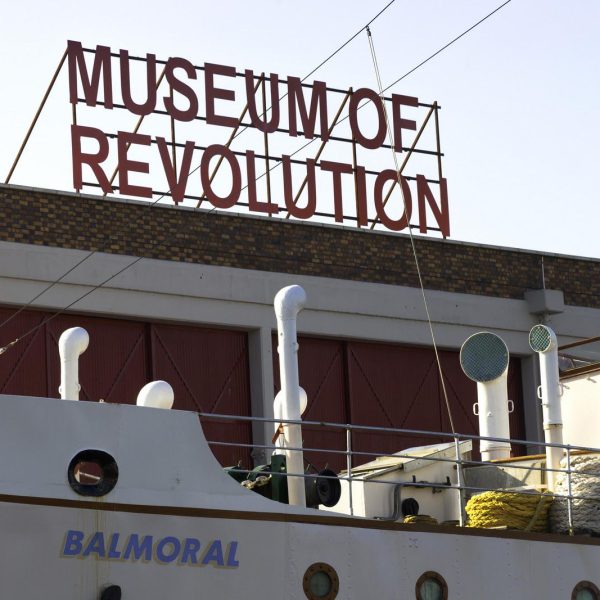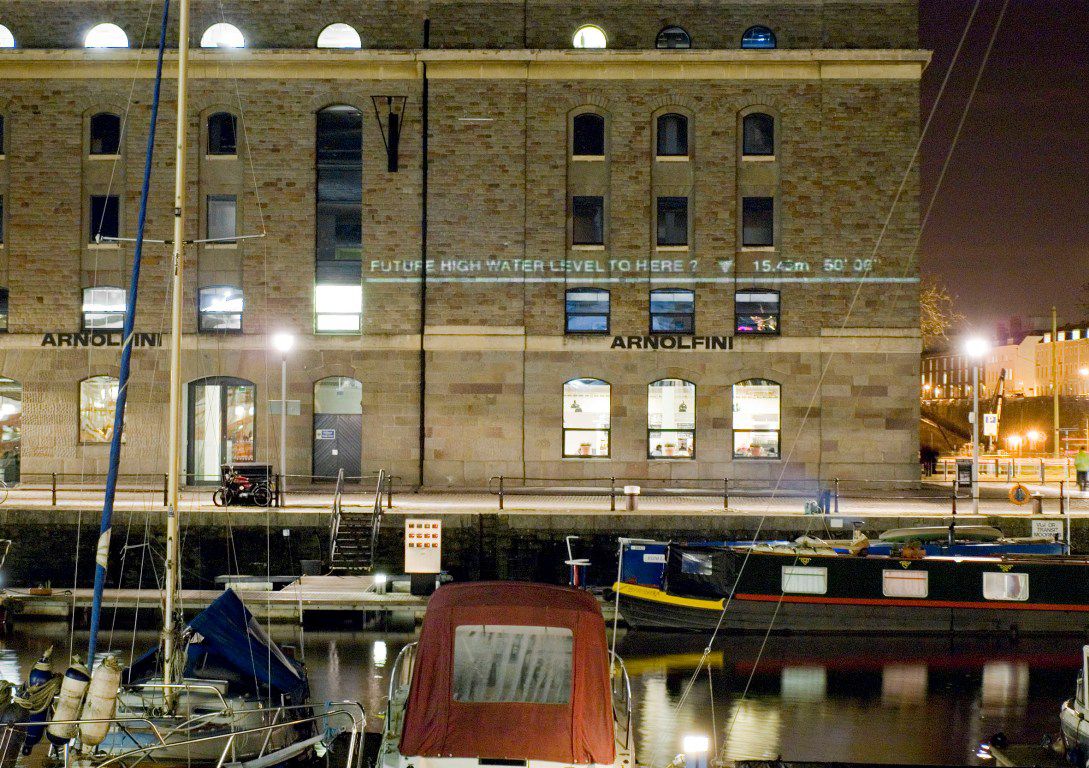
Synopsis
Museum of Revolution is a temporary artwork staged as part of Arnolfini’s 50th celebrations and the exhibition ‘Museum Show’ (Part 1). The work is located on the roof of Bristol Museum and Art Gallery’s M Shed building in Bristol’s Harbourside.
Marko Lulic’s practice considers such themes as architecture, monuments, public space, and the legacy of Modernism in Eastern and Western Europe. The starting point for his work ‘Museum of Revolution’ was the Muzej Revolucije (Museum of Revolution) in Belgrade, designed in 1961 by the Croatian architect Vjenceslav Richter. This museum was never completed, and only progressed as far as the ceiling of the building’s basement. A ruin now overgrown with shrubbery, it still exists, entirely forgotten, in New Belgrade. For Lulic, this museum is a model case of how dreams or revolutions can peter out, and how manifestos of a new dawn can turn into symbols of decline.
The work questions the current meanings of the subjects of ‘museum’ as well as ‘revolution’. It looks to launch a discourse on the significance of museums in the 21st century, and encourages spectators “to find out about their future expectations of and dreams about this institution”. For Lulic, ‘revolution’ represents an “emotionally charged, utopian concept”, which can and should be interpreted by the spectator in individual ways.
The work, a text piece that should be located on top of a designated building, renders the building as both a plinth, but also a temporary Museum of Revolution. In Bristol, the work is presented on top of the MShed in Bristol’s harbourside.
Museum Show
One of the most curious tendencies in modern and contemporary art has been that of museums created by artists. Museum Show will be a large-scale exhibition – a museum of museums – displaying this comprehensive selection of highly idiosyncratic, semi-fictional institutions. Presented at Arnolfini in two chapters, beginning with Part 1 from 24 September – 19 November 2011, it will be the first exhibition to chart this particular tendency in contemporary art.
Artists have continued consistently to invent their own institutions. The reasons for practitioners deciding to work in this way have varied greatly between artists – from critique directed specifically towards institutions of art, to more contemporary examples that focus their attention towards wider social and political realms of cultural hegemony.
Across its two chapters, Museum Show will present museums by approximately 40 artists from across the spectrum of career status, canonical to emerging, and from around the globe. The exhibition presents ‘museums’ that employ a classic ‘museological’ approach, including Marcel Broodthaers’ seminal Musée d’Art Moderne, Départment des Aigles, or the absurdity of Bill Burns’ Museum of Safety Gear for Small Animals, through to broader, more conceptual understandings of a museum infrastructure, such as Tom Marioni’s Museum of Conceptual Art – a functioning bar and an early example of ‘convivial’ artwork in the US, to the abjection of the Museum of Ordure, or the utopia of Museo Aero Solar – a floating museum made of thousands of recycled carrier bags.
The opening of Museum Show Part 1 will also mark the landmark occasion of Arnolfini’s 50th anniversary, and the culmination of a year of celebration.
Arnolfini
Arnolfini is one of Europe’s leading independent, contemporary arts organizations, and is the flagship art centre for the South West of England with 450,000 visitors annually. 2011 is the year of Arnolfini’s 50th anniversary. Since its foundation in 1961, Arnolfini has built an international reputation for commissioning and presenting innovative, experimental work in the visual arts, always with a strong emphasis upon audience engagement. Many thousands of artists and performers have been involved with Arnolfini during this time, often gaining their first opportunity before going on to long-term success, and this wealth of creativity has been appreciated and enjoyed by consistently large audiences. Much of this groundbreaking work would not have been made or shown in Bristol and the South West region without the Arnolfini. Previous major solo exhibitions at Arnolfini have included: Marcel Broodthaers, Bridget Riley, Richard Long and Liam Gillick, as well as more recently Cosima von Bonin in 2011.


